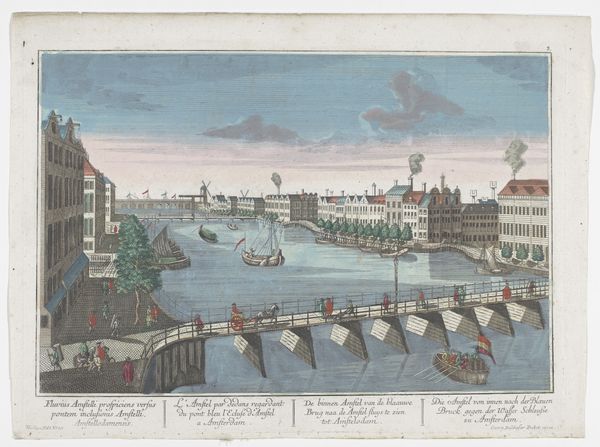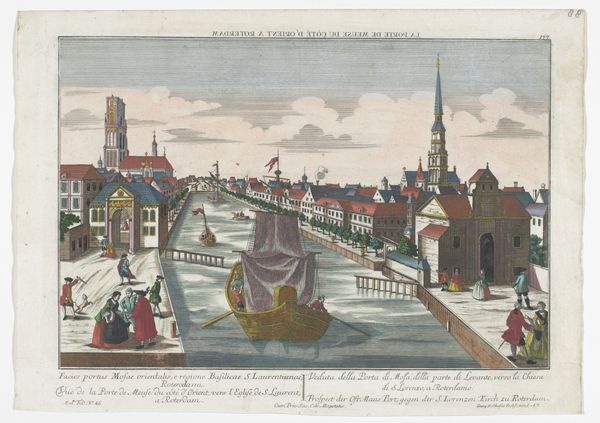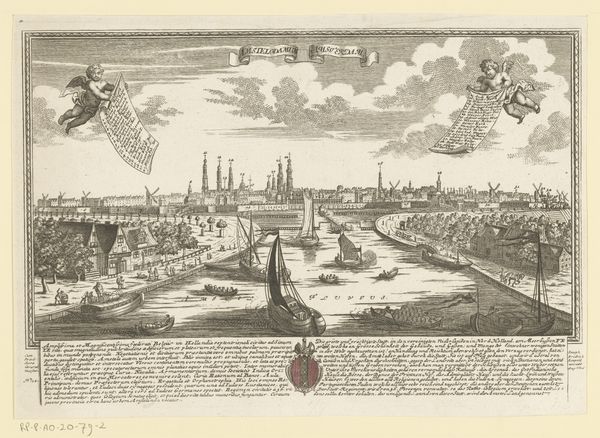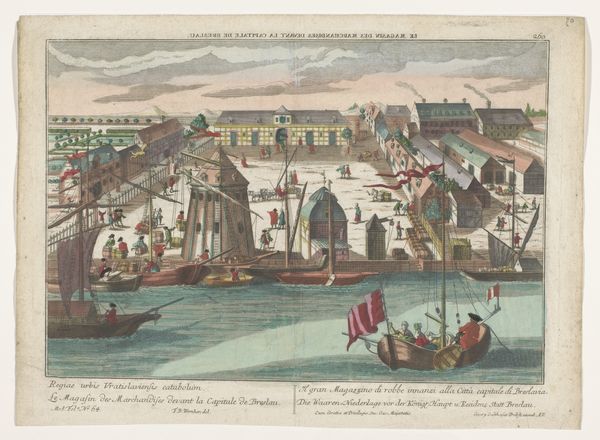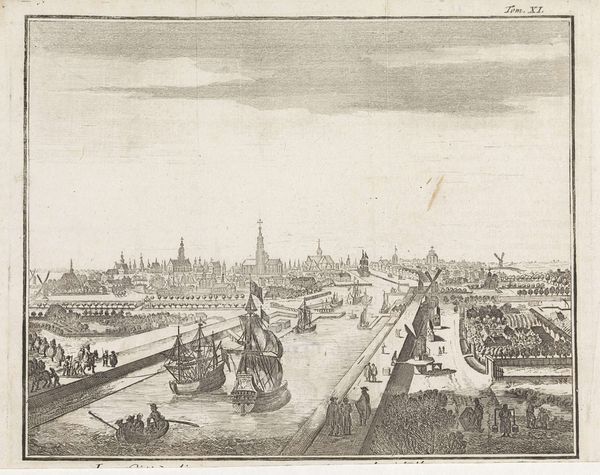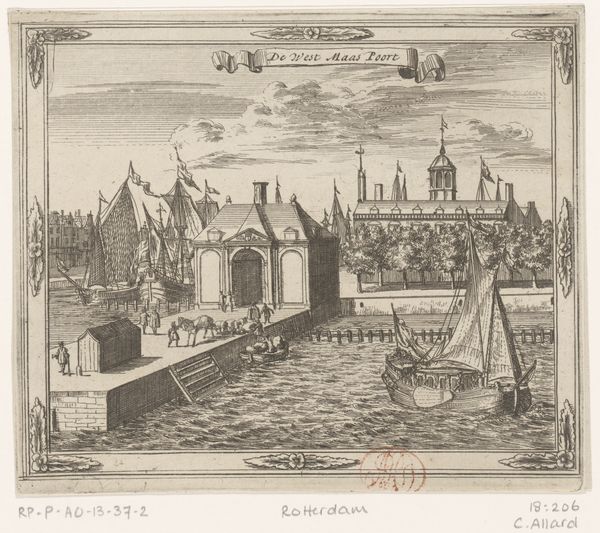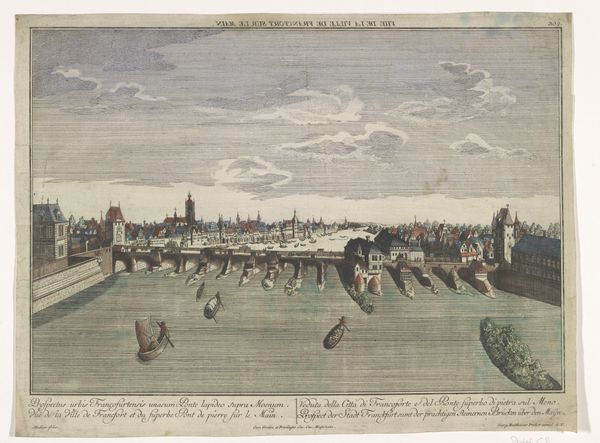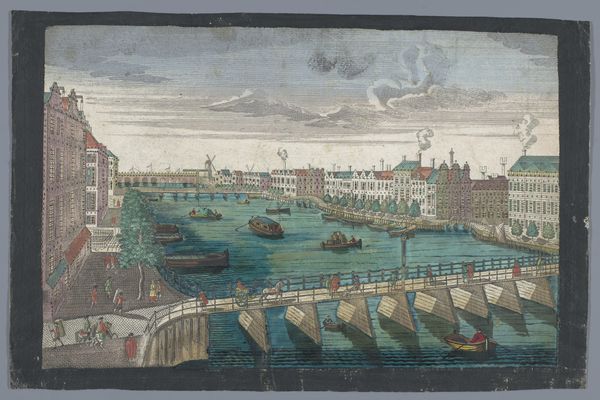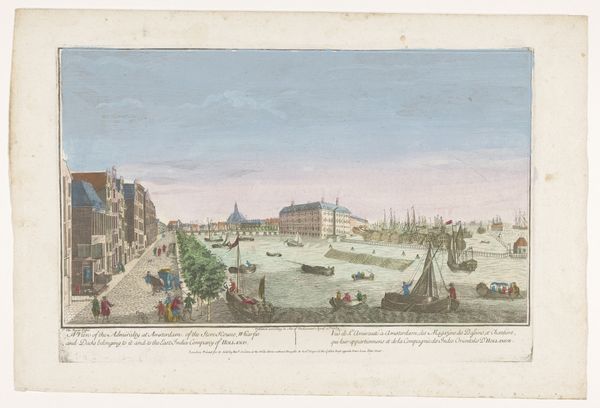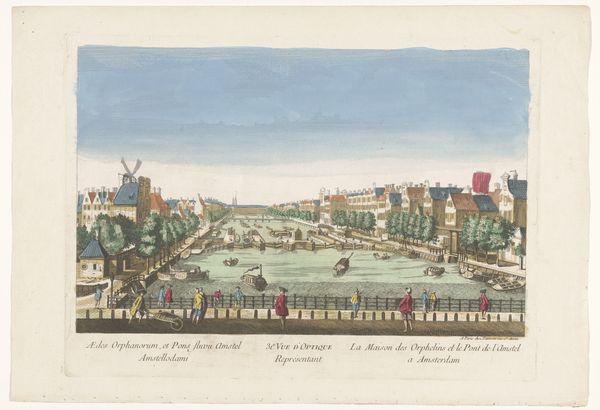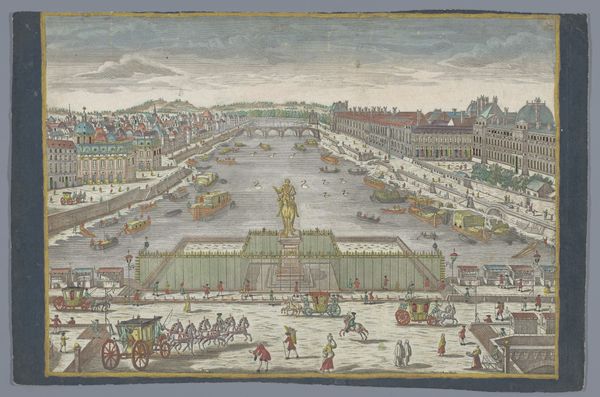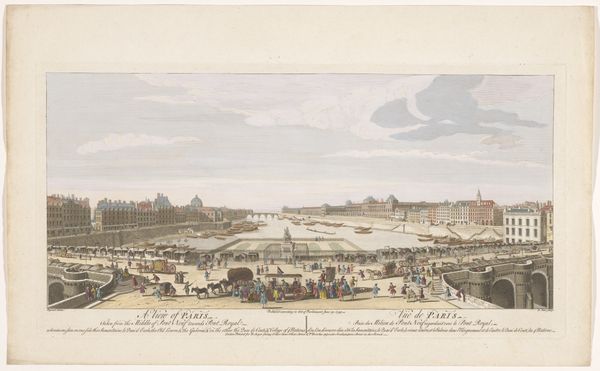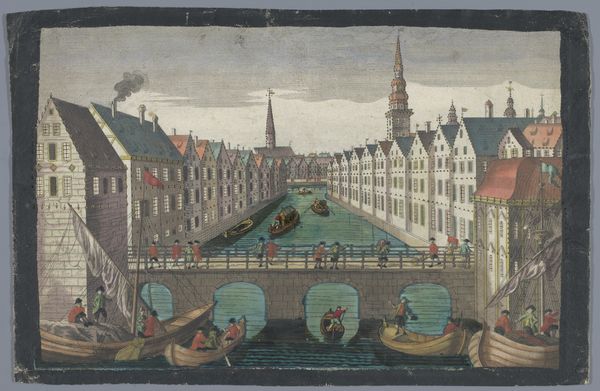
drawing, print, etching, paper, ink
#
drawing
#
dutch-golden-age
# print
#
etching
#
landscape
#
paper
#
ink
#
coloured pencil
#
cityscape
#
genre-painting
#
watercolor
Dimensions: height 328 mm, width 441 mm
Copyright: Rijks Museum: Open Domain
Editor: This is "Gezicht op de Amsterdamse Vaart te Haarlem," a print made with etching, ink, and watercolor by Georg Balthasar Probst, dating anywhere from 1742 to 1801. The colors are striking and the scene is busy, but there's something very…planned about the whole composition. What do you see in this piece, especially knowing it comes from that period? Curator: I see a meticulously constructed vision of Dutch society deeply entrenched in trade and transport. What stands out isn't just the depiction of the canal, but the diverse social classes engaging with it. The elegantly dressed figures stroll by the water while laborers work the boats. It prompts us to ask: who had access to this "progress"? Whose labor made it possible? The artwork performs less as a celebration of industry and more as a document reflecting social stratification of that time. What do you make of the framing of the city itself in the background? Editor: It almost feels like a backdrop, something observed, as though the city's happenings are staged. The focus seems to be on how individuals are interacting with these trading routes. Curator: Precisely! The cityscape, though rendered in detail, plays a secondary role to the economic activities happening along the canal. Consider this artwork within the larger context of Dutch Golden Age landscapes: do you think there is commentary here on humanity’s relationship to labor? On social justice? Editor: It definitely offers more nuance than I initially thought. I was drawn to the colorful aesthetic, but now it’s impossible to ignore those critical layers of labor, trade, and wealth disparity it conveys. Curator: Right? And that’s where art history intersects with contemporary dialogues – allowing us to question whose stories are being told and whose are being overlooked. Editor: Thank you, that has expanded how I view the period and the artwork itself. I’ll certainly view art through a more critical, questioning lens going forward!
Comments
No comments
Be the first to comment and join the conversation on the ultimate creative platform.
